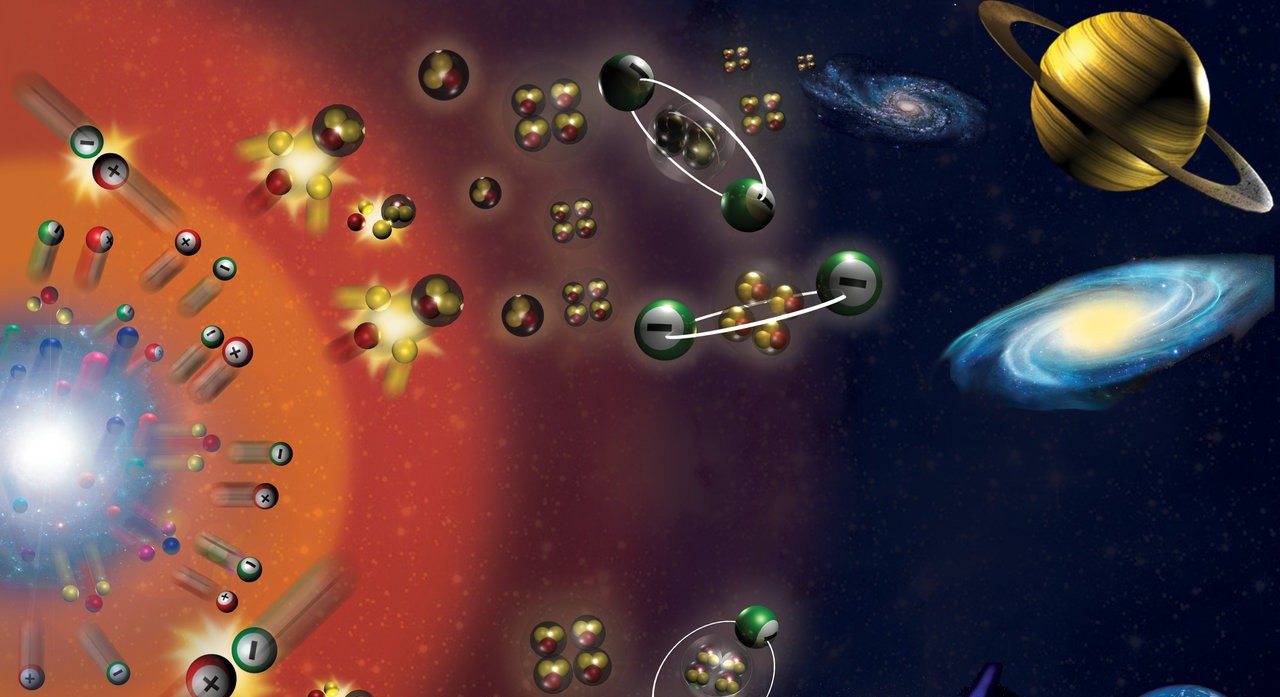
Astronomy has been one of the most influential sciences to our understanding of the universe, as we study its development over the course of thousands of years. The formation of the cosmos has been studied continuously by scientists trying to understand the beginnings of our universe and how it evolved. The development of new technologies allowing more accurate and subtle astronomical observation has culminated in the Big Bang theory. After countless tests and observations, scientists now believe that a violent explosion known as the Big Bang created the universe and led to the movement of galaxies away from each other (National Geographic, 2013). Yet despite all our research and increasingly deeper understanding of the cosmos, we have never ceased to wonder about the origins of our universe, its exact age, or even how such knowledge may ultimately affect our daily lives.
About 13.7 billion years ago, space was completely empty. The universe began as a very small ball of infinite density and temperature that lit up the darkness and exploded in the tremendous event known as the Big Bang (Coffey, 2010). The explosion filled empty space with small atoms and particles that moved away from each other at a very high speed and temperature. In 1929, a great physicist and astronomer, Sir Edwin Hubble, established the beginnings of the Big Bang theory. Hubble observed over the years that the universe seemed to be expanding continuously after the first huge explosion. Hubble also calculated that the galaxies in the universe were expanding and moving in all directions. Astronomers discovered that after the explosion, the universe started to cool off while still expanding (LaRocco and Rothstain).
In addition to the great and rich discoveries made by the father of the Big Bang theory, a newly designed telescope was named after him. The Hubble telescope provided astronomers with more information about the elements that existed in the universe and helped them understand the galaxies and stars even more than ever before (LaRocco and Rothstain).
In addition to the explanations, discoveries, and understanding of the speed and movement of galaxies in different directions, there are further studies and evidences for the Big Bang. A noise of extraterrestrial origin was discovered by Arno Penzias and Robert Wilson while detecting microwaves from outer space. It was clear to them that the noise was not emanating from one location only, but instead was coming from several different directions at once. It was obvious that the noises they heard was radiation from the farthest reaches of our universe. Their discovery lent much credence and attention to the Big Bang theory (LaRocco and Rothstain).
Recently, NASA’s COBE satellite detected cosmic microwaves that were similarly coming from the outer reaches and directions of the universe. The microwaves that NASA’s COBE was able to detect seemed remarkably uniform, which means that they illustrated and defined the homogeneity of the early stages of our cosmos (LaRocco and Rothstain).
After the initial explosion, the universe was extremely hot due to the combination of particles of both matter and antimatter moving apart in all directions. When these anti-particles collided, they destroyed one another causing the release of even greater levels of energy and heat. This produced pure energy (LaRocco and Rothstain). Yet, as the particles annihilated one another, they pushed the boundaries of our burgeoning universe outwards in an expansive cosmic event whose aftereffects can be observed to this day (Coffey, 2010). Various particles were formed by the Big Bang, especially atoms such as hydrogen, and helium, along with traces of lithium. Later on, these elements merged together due to gravity, creating giant clouds that formed galaxies and stars (BBC, 2013).
Eventually, the Big Bang theory became the most widely accepted and thorough scientific explanation for the origins of our universe, incorporating the observations, studies, and explanations that had boggled scientists for decades. While it mainly focused on the early development of the universe, the Big Bang theory looks forwards as well as backwards, predicting and explaining many phenomena that scientists have gone on to confirm, thereby proving the Big Bang theory’s empirical veracity. Yet, our understanding may never truly be complete, as we continue to extend the limits of our knowledge (LaRocco and Rothstain). The Big Bang theory is mainly accepted within the scientific community, due to the controversy created by diversity of thoughts, religions, and backgrounds of all people (BBC, 2013).
By Georgina
Source

